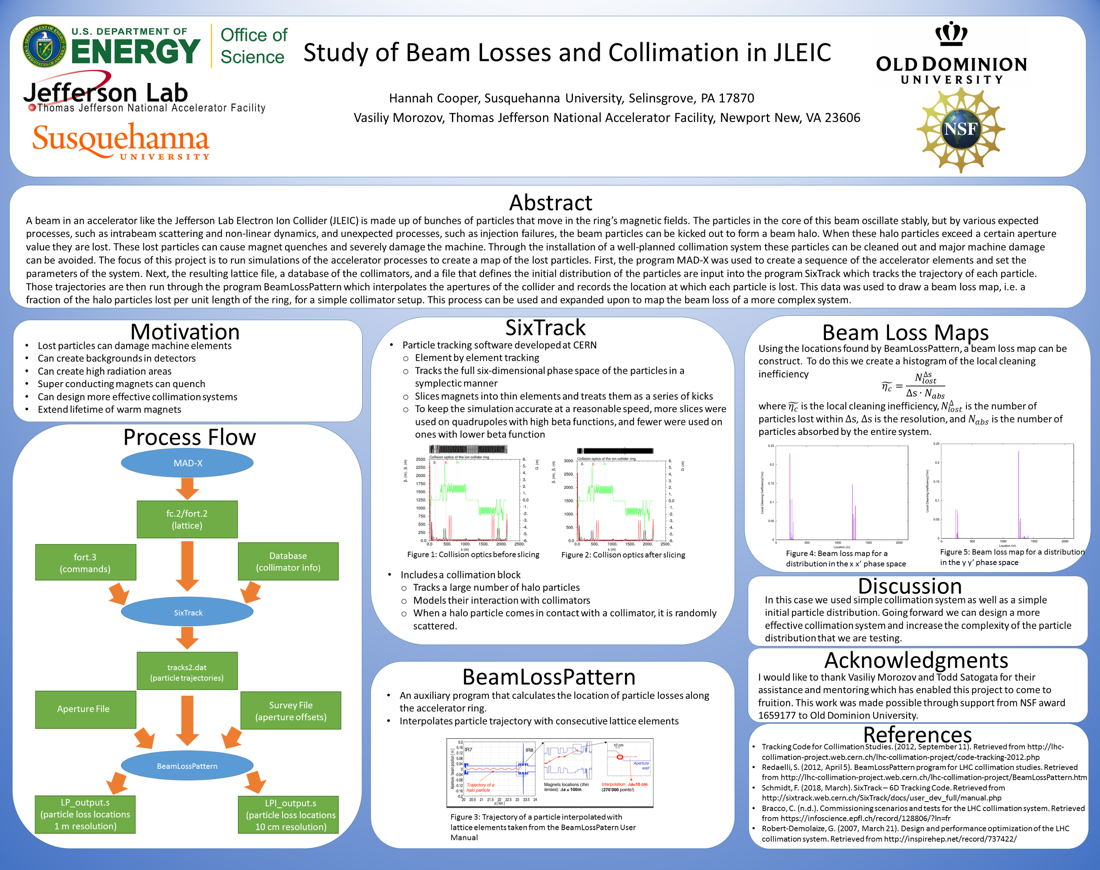Undergraduate Research at Jefferson Lab
Study of Beam Losses and Collimation in JLEIC
Student: Hannah Cooper
School: Susquehanna University
Mentored By: Vasiliy Morozov
A beam in an accelerator like the Jefferson Lab Electron Ion Collider (JLEIC) is made up of bunches of particles that move in the ring's magnetic fields. The particles in the core of this beam oscillate stably, but by various expected processes, such as intrabeam scattering and non-linear dynamics, and unexpected processes, such as injection failures, the beam particles can be kicked out to form a beam halo. When these halo particles exceed a certain aperture value they are lost. These lost particles can cause magnet quenches and severely damage the machine. Through the installation of a well-planned collimation system these particles can be cleaned out and major machine damage can be avoided. The focus of this project is to run simulations of the accelerator processes to create a map of the lost particles. First, the program MAD-X was used to create a sequence of the accelerator elements and set the parameters of the system. Next, the resulting lattice file, a database of the collimators, and a file that defines the initial distribution of the particles are input into the program SixTrack which tracks the trajectory of each particle. Those trajectories are then run through the program BeamLossPattern which interpolates the apertures of the collider and records the location at which each particle is lost. This data was used to draw a beam loss map, i.e. a fraction of the halo particles lost per unit length of the ring, for a simple collimator setup. This process can be used and expanded upon to map the beam loss of a more complex system.

Citation and linking information
For questions about this page, please contact Education Web Administrator.
